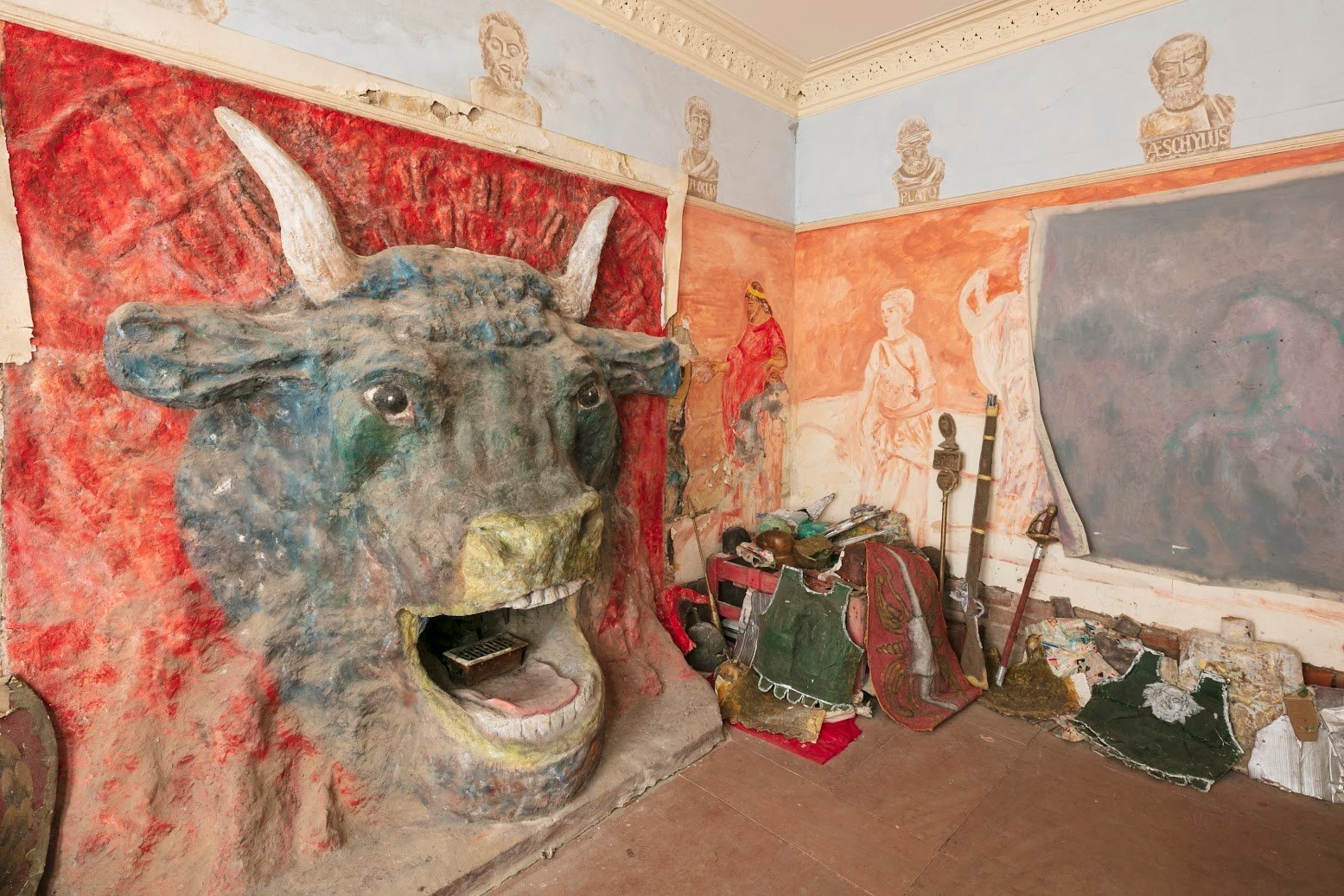A flat, transformed by artist, Ron Gittins, has been granted Grade II listed status by Historic England.
The Silverdale Road flat, located in Birkenhead, England, was the home of Ron until his death at the age of 79.
Known to his local community as a colourful and flamboyantly eccentric, Ron would often be seen dressed in homemade costumes, such as military uniforms, as a Roman centurion, or busking as a troubadour.
Between 1986 and 2019, Ron created a hidden visionary environment within his flat, with inspiration drawn from Ancient Egypt, the Minoans, and Ancient Greece.
He constructed a lion and Minotaur shaped fireplace by hand using wet clay, and created murals painted from the floor to ceiling. Within the kitchen area he built a Roman or Middle Eastern bread oven, and in the rear bedroom he installed a fireplace with salmon jambs.

Despite Ron renting the flat, his tenancy agreement allowed him to decorate the interior of the property to his own taste without prior written consent of the Landlord. However, fearing expulsion should his landlord ever find out, he kept his fantasy flat a secret, even from his entire family.
Following his death, the flat was put up for auction in 2022, prompting a campaign to raise funds to purchase the building and secure Ron’s creations.
As of 2024, the flat has now been given a Grade II listed status to protect the unique visionary environment, which according to Historic England, is a “notable example of large-scale Outsider Art created outside the influence of the mainstream art world”.
“Outsider Art is an internationally recognised creative phenomenon understood by mainstream museums and galleries and increasingly popular with collectors and curators. It often transcends genres and goes under a variety of umbrella terms, including Art Brut (raw art), Folk art, Intuitive art/Visionary art and Naïve art,” added Historic England.
Header Image Credit : Historic England
Sources : Historic England | Ron’s Place





